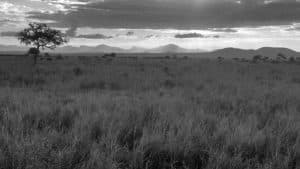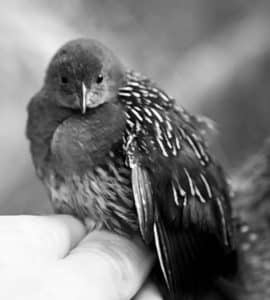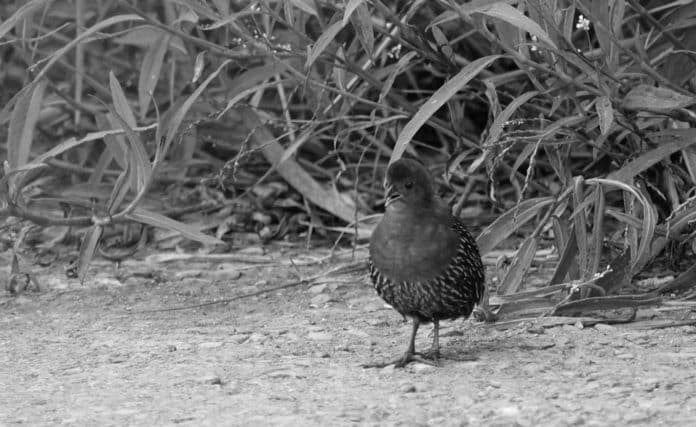Introduction to the Streaky-Breasted Flufftail
Welcome to Tanzania’s marshy havens, where a hidden gem awaits avid birdwatchers and nature enthusiasts – the Streaky-Breasted Flufftail. This elusive bird, scientifically known as Sarothrura boehmi, is a small rail species found in the wetlands of Tanzania. With its vibrant plumage and unique behavior, the Streaky-Breasted Flufftail in Tanzania is a fascinating creature that deserves our attention and conservation efforts.
Habitat and Distribution of the Streaky-Breasted Flufftail in Tanzania

The Streaky-Breasted Flufftail is primarily found in the marshy habitats of Tanzania, particularly in the eastern and southern regions of the country. These wetlands provide the perfect environment for the flufftail’s survival, as they offer a rich abundance of food sources and ample vegetation for nesting.
The distribution of the Streaky-Breasted Flufftail in Tanzania is quite limited, making it a rare sighting for birdwatchers. It is mostly found in the wetlands of the Selous Game Reserve, Kilombero Valley, and the Udzungwa Mountains. These areas are known for their diverse ecosystems and attract a variety of bird species, making them ideal for birding enthusiasts.
Unique Characteristics and Behavior of the Streaky-Breasted Flufftail
The Streaky-Breasted Flufftail is a small bird, measuring around 18-20 centimeters in length. Its most distinctive feature is its streaked breast, which gives it its name. The plumage of the flufftail is a beautiful combination of rusty brown and black, with subtle patterns that help it blend seamlessly into its marshy surroundings.
This bird is known for its secretive behavior, preferring to stay hidden among the dense vegetation of the wetlands. It is an excellent swimmer and can often be seen wading through shallow waters in search of its favorite food – aquatic insects, small invertebrates, and seeds. The Streaky-Breasted Flufftail has a unique call, resembling a series of high-pitched whistles, which it uses to communicate with its mate and establish its territory.
Conservation Status and Threats Faced by the Streaky-Breasted Flufftail
The Streaky-Breasted Flufftail is listed as “Vulnerable” on the IUCN Red List of Threatened Species. The main threats to its survival are habitat loss and degradation due to human activities such as agriculture, infrastructure development, and drainage of wetlands. Climate change also poses a significant threat, as it alters the delicate balance of the flufftail’s marshy habitat.
Conservation efforts are underway to protect the Streaky-Breasted Flufftail and its habitat in Tanzania. Local and international organizations are working together to raise awareness about the importance of wetland conservation and implementing measures to mitigate the threats faced by this species. These initiatives include habitat restoration, community engagement, and the establishment of protected areas.
Ecotourism Opportunities for Observing the Streaky-Breasted Flufftail in Tanzania

For birdwatchers and nature enthusiasts, Tanzania’s marshy havens offer unique ecotourism opportunities to observe the Streaky-Breasted Flufftail in its natural habitat. Guided birding tours are available, led by experienced local guides who are knowledgeable about the flufftail and its behavior. These tours not only provide a chance to spot the elusive flufftail but also contribute to the local economy and conservation efforts.
Best Locations for Spotting the Streaky-Breasted Flufftail in Tanzania’s Marshy Havens
To increase your chances of spotting the Streaky-Breasted Flufftail in Tanzania, head to the Selous Game Reserve, Kilombero Valley, or the Udzungwa Mountains. These locations offer the ideal combination of wetland habitats and diverse bird populations. Hiring a local guide or joining a birding tour will greatly enhance your chances of a successful sighting, as they know the flufftail’s preferred locations and can identify its unique calls.
Tips for Birdwatchers and Nature Enthusiasts Visiting Tanzania to See the Streaky-Breasted Flufftail
If you’re planning a birdwatching trip to Tanzania to see the Streaky-Breasted Flufftail, here are some helpful tips:
- Be patient: The flufftail is a shy bird and may take some time to reveal itself. Spend ample time in its habitat, observing quietly and waiting for the perfect moment.
- Bring binoculars and a field guide: These tools will help you identify the Streaky-Breasted Flufftail and other bird species you encounter along the way.
- Respect the environment: Follow all guidelines and regulations set by local authorities to protect the flufftail’s habitat. Avoid disturbing nesting sites and refrain from littering.
Other Bird Species Found in the Same Habitat as the Streaky-Breasted Flufftail
While searching for the Streaky-Breasted Flufftail, you may also encounter a variety of other bird species that call the marshy havens of Tanzania home. Some common sightings include the Grey Crowned Crane, African Jacana, and the Malachite Kingfisher. These wetlands are a haven for bird diversity, offering a unique opportunity to observe multiple species in their natural environment.
Conservation Efforts and Initiatives to Protect the Streaky-Breasted Flufftail in Tanzania

In Tanzania, various conservation efforts and initiatives are in place to protect the Streaky-Breasted Flufftail and its fragile habitat. Organizations such as the Tanzania Bird Atlas and the Wildlife Conservation Society work closely with local communities to raise awareness about the importance of wetland conservation. These initiatives focus on habitat restoration, research, and education to ensure the long-term survival of the flufftail and other wetland species.
Conclusion: Appreciating the Beauty and Importance of the Streaky-Breasted Flufftail in Tanzania’s Marshy Havens
The Streaky-Breasted Flufftail is not just a beautiful bird; it is also a symbol of the delicate balance of Tanzania’s marshy havens. As we appreciate its vibrant plumage and unique behavior, let us also recognize the importance of protecting its habitat and the wetlands it calls home. Through ecotourism, conservation efforts, and community engagement, we can ensure the survival of this hidden gem and continue to enjoy the wonders of Tanzania’s natural heritage.

































